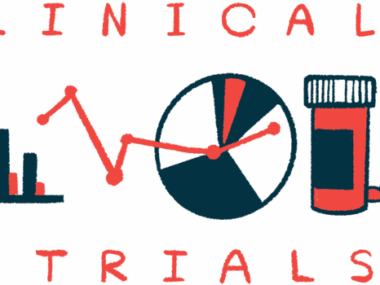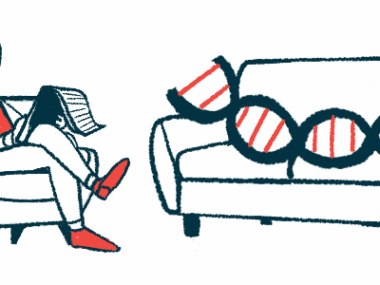Gene therapy TSHA-102 showing safety, benefits in adults and kids
High-dose testing starting in older patients, planned for pediatric trial
Written by |

TSHA-102, an experimental gene therapy for Rett syndrome, appears to be well tolerated and may be of benefit in multiple areas, from gains in motor function and social skills to fewer seizures, regardless of the severity of a patient’s mutation, its developer, Taysha Gene Therapies, reported.
These are among initial findings in REVEAL (NCT05606614), a Phase 1/2 clinical trial assessing the safety and efficacy of TSHA-102 in up to 18 women and adolescents with Rett syndrome, ages 12 and older. A pediatric version (NCT06152237) of the trial, also called REVEAL, began dosing girls, ages 5 to 8, earlier this year.
Data released cover adult and pediatric patients treated with the one-time gene therapy at low dose. Taysha has started treating participants with a higher dose in adult/adolescent trial, and an independent data monitoring committee approved a start to high-dose testing in children, provided safety over time is seen in the first older patient treated at that dose.
According to the company, high-dose treatment in a second children’s group may begin in the third quarter of 2024, with initial safety data possibly available before the year’s end.
Gene therapy aims for production of the MeCP2 protein at healthy levels
“We are highly encouraged by the safety profile and broad clinical response observed across multiple domains in both the adult and pediatric patients with different genetic mutation severity treated with the low dose of TSHA-102,” Sean P. Nolan, Taysha’s chairman and CEO, said in company press release.
Nearly all cases of Rett syndrome are caused by mutations in the MECP2 gene, resulting in a shortage of MeCP2, a protein needed in the right amount for the brain to develop normally. A lack of MeCP2 leads to the disease’s characteristic symptoms, but having too much of this protein can be harmful as well.
Injected directly into the spinal canal (intrathecal injection), TSHA-102 uses a viral vector to deliver a shorter but working version of the MECP2 gene to brain cells so they can start producing the protein. The gene is packaged together with a technology called miRARE, which is designed to allow for production of just enough protein.
The adult and adolescent REVEAL trial is a two-part, dose-escalation study. Part A is testing two doses — 570 trillion vector genomes (vg) and 1,000 trillion vg — of TSHA-102 in up to five patients to find the highest safe dose (two treated at low dose and three to be given a high dose). Part B is a dose-expansion phase allowing for further safety and efficacy findings in up to 13 women and teenage girls, who will receive the dose selected in Part A.
Two women treated at low dose showing gains in motor and social skills
So far, two young women with Rett syndrome were treated with TSHA-102 at low dose, and a third woman has been given the higher dose.
The first low-dose patient, age 20, had mutations linked with severe disease and was followed for about one year, while the second woman, age 21, was expected to have mild disease based on her mutation and has been followed for 36 weeks (about eight months). The therapy was well tolerated by both patients, with no serious side effects reported.
One year after treatment, the first patient showed improvements in hand function, was able to sit without assistance for the first time in more than one decade, and displayed better social skills and a greater ability to communicate, the release stated. She also was able to breathe better, and was reported to show normal sleep quality and duration for the first time in 20 years.
The second woman was reported to show an easing in hand stereotypies (continuous and purposeless hand movements) for the first time in nearly 20 years, to be more responsive and interested in social interactions, to have better breathing patterns and circulation, and to be free of seizures for 8.5 months — compared with two to four seizures a week prior to treatment — and with a 25% reduction in her anti-seizure medications.
“The longer-term follow up data indicate a durable response with sustained and new improvements,” Nolan said. “We believe these improvements in adult and pediatric patients further reinforce the potential of TSHA-102 to be transformative for a broad range of patients with Rett syndrome.”
Two children treated at low dose, and high-dose testing may start this year
The pediatric REVEAL trial also is assessing the safety and efficacy of TSHA-102 doses in two parts. In Part A, two children ages 5-8 have received a low dose of the medication, and three more could be given the higher dose if a 42-day safety review is positive for an adult treated at that dose. In Part B, the selected dose could be tested in two patient groups, one ages 5-8 and the other ages 3-5.
Initial findings in the first two treated children, a 6-year-old with mutations linked with moderate disease and a 7-year-old with mutations associated with milder disease, also support the therapy being well tolerated in young Rett patients.
At 12 weeks post-treatment (about three months), the youngest child was reported to show improvements in hand function, being able to hold an object for three minutes compared with a pretreatment 12 seconds, to show better stability and balance, to sit unassisted for a longer time, and to be able to swallow better and take food orally. She also was communicating better, showed less breath holding, and her seizures were stable.
The second child, assessed at eight weeks (about two months) after treatment, also had better hand and walking function, and gained the ability to stand after sitting in a chair and to a walk up a stair. Improvements also were reported in her level of social interest and eye contact, breathing patterns, and she had more days without seizures.
“The initial improvements observed across multiple areas of disease in both pediatric patients are encouraging early signs of possible benefit,” said Colleen Buhrfiend, MD, an assistant professor of pediatrics at Rush University Medical Center in Chicago, one of this trial’s clinical sites.
Both the pediatric and the adult/adolescent REVEAL trials may still be recruiting eligible patients. The pediatric study is taking place at sites across the U.S. and one in London, while the trial in women and teenage girls with Rett syndrome currently lists one site each in the U.S. and Canada.






